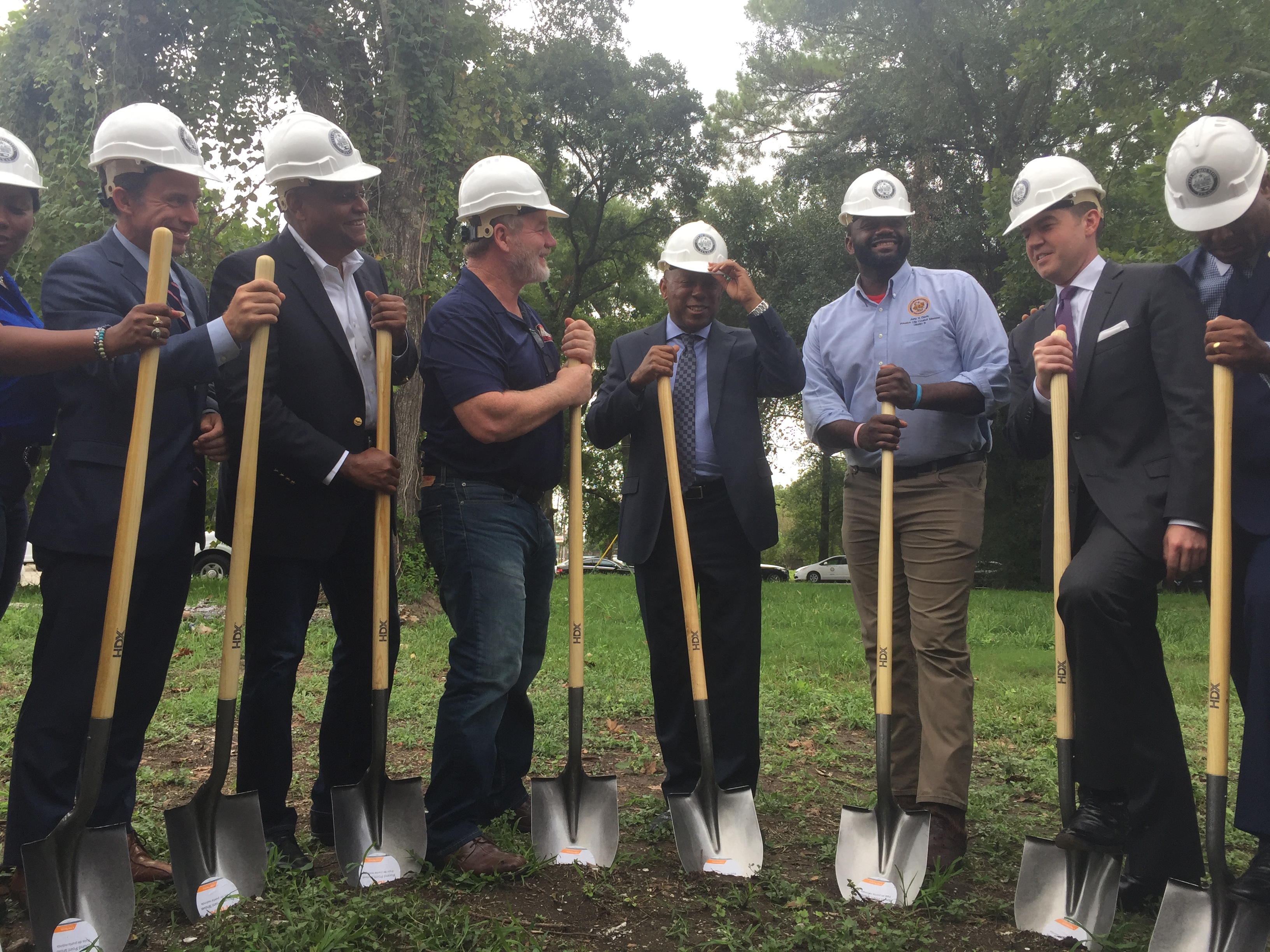For years, Houston's Land Assemblage Redevelopment Authority, tasked with turning vacant lots into affordable housing, lagged behind expectations as housing prices rose. Now, as the city anticipates a significant infusion of disaster recovery funding and neighborhoods still struggle with Hurricane Harvey's devastation, officials are looking to add roughly 20 single family homes each month across the city through the retooled land bank program, starting with the northwest Houston neighborhood of Acres Homes.
Working with 12 city-approved builders, both for-profit and not, the city broke ground Tuesday on eight homes in the neighborhood with 11 more expected by the end of September. The city has identified 100 lots for future construction and income-eligible homebuyers, those earning 80 percent of the area median income or less, will also be able to apply for down payment assistance available to help subsidize the purchase. For a family of four, 80 percent of the metropolitan area median income is $59,900, according to federal guidelines.
Mayor Sylvester Turner called the new effort a "major step in the right direction" toward addressing the city's growing affordability concerns and investing in the five, long-underserved pilot neighborhoods that are part of the Complete Communities initiative, including Acres Homes.
But it also represents a commitment during a particularly critical time for the city.
The expectations and commitments LARA failed to meet are perhaps even higher for this latest affordable housing construction push as the city navigates recovery, looks to build resiliency, confronts an affordability crisis and promises to correct the missteps of the past.
Despite owning hundreds of lots, the redevelopment authority reported slow progress in producing and selling affordable homes. Furthermore, a Houston Chronicle investigation found that rules about income eligibility, resale requirements and other requirements meant to ensure the homes were sold and maintained for several years as affordable were not followed. The newspaper also found that taxes collected by tax increment reinvestment zones across the city that were meant to go toward affordable housing programs were spent with little oversight and accountability while tens of millions of dollars turned up.
"Most of that $15 million was sent over to them as a blank check," said Tom McCasland, head of the city's housing and community development department, of the redevelopment authority. A different, more typical reimbursement process will be used going forward, he said at the groundbreaking Tuesday.
The latest home building effort will draw about half of its funding from TIRZ dollars and the other half from recovery funding, according to McCasland.
Since taking the position in 2016, McCasland said he has also pushed for structural changes to the redevelopment authority, including the hire of the first full-time executive director, scheduled to start work Wednesday.
County Commissioner Rodney Ellis said he had concerns after learning of past missteps but that McCasland reassured him: "That was the old LARA board."
Along with the mayor, McCasland has also pushed for more ambitious building goals and a definition of affordability that works for a range of low- to moderate-income levels. "We should be one of the biggest developers" of affordable housing in the city within a few months, he said.
For council member Jerry Davis, whose district includes Acres Homes, the program lapse that concerned him the most was the glut of LARA-owned vacant lots that he said attract illegal dumping and other unwanted activity. "I'm looking first and foremost to fill in some of the gaps in vacant lots," he said. Even at Tuesday's event, he said, a constituent approached him about several overgrown LARA-owned lots in his neighborhood in need of attention. Still, he's largely confident in the direction the housing department and land bank are headed. "There's going to be some hiccups," he said.
In addition to the pent-up demand for results and affordable housing options, the program has the added urgency of still ongoing recovery a year out from the devastation of Hurricane Harvey. More than 300,000 housing units were affected by the storm, adding to an existing shortage of affordable homes in Houston. With $1.15 billion in recovery funding headed to the city, the city council approved a housing plan focused on homeowner and rental assistance, buyouts and other efforts, including $200 million for new single-family construction.
These new homes, said McCasland, can offer options for areas targeted for buyouts and help alleviate the additional construction costs under new regulations approved by the city that require new construction, including rebuilding for homeowners with a significant enough degree of damage and homes expanding by roughly a third, in the 500 year floodplain to elevate those structures. But with new floodplain maps expected, McCasland said they're erring on the side of caution to try to reduce risk.
One applicant, said McCasland, has half of his current home in the floodway. "People should not be living in the floodway," he said. "We want to be making sure people have opportunities to move."
With the new regulations to elevate, Elaine Morales, design manager at buildingcommunityWORKSHOP who helped create plans for the new homes, said it was also important that the homes be accessible while still supporting the community fabric. "In our designs, the porch is a big element," she said. They presented the city with five designs, each with two options. Several include ramps while they're optional in others. After attending design workshops as part of the city's Complete Communities initiative, Morales said they were able to create new, community-informed options, building on the design center's work after Hurricane Ike.
"We know that it doesn't happen overnight," said McCasland. But the city is uniquely positioned now to take significant steps.
"The mission is to build thousands of affordable homes in this city," said Turner.

